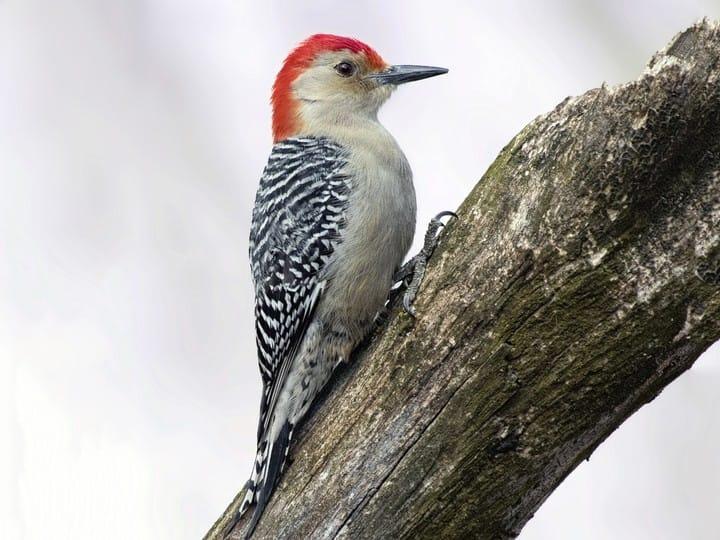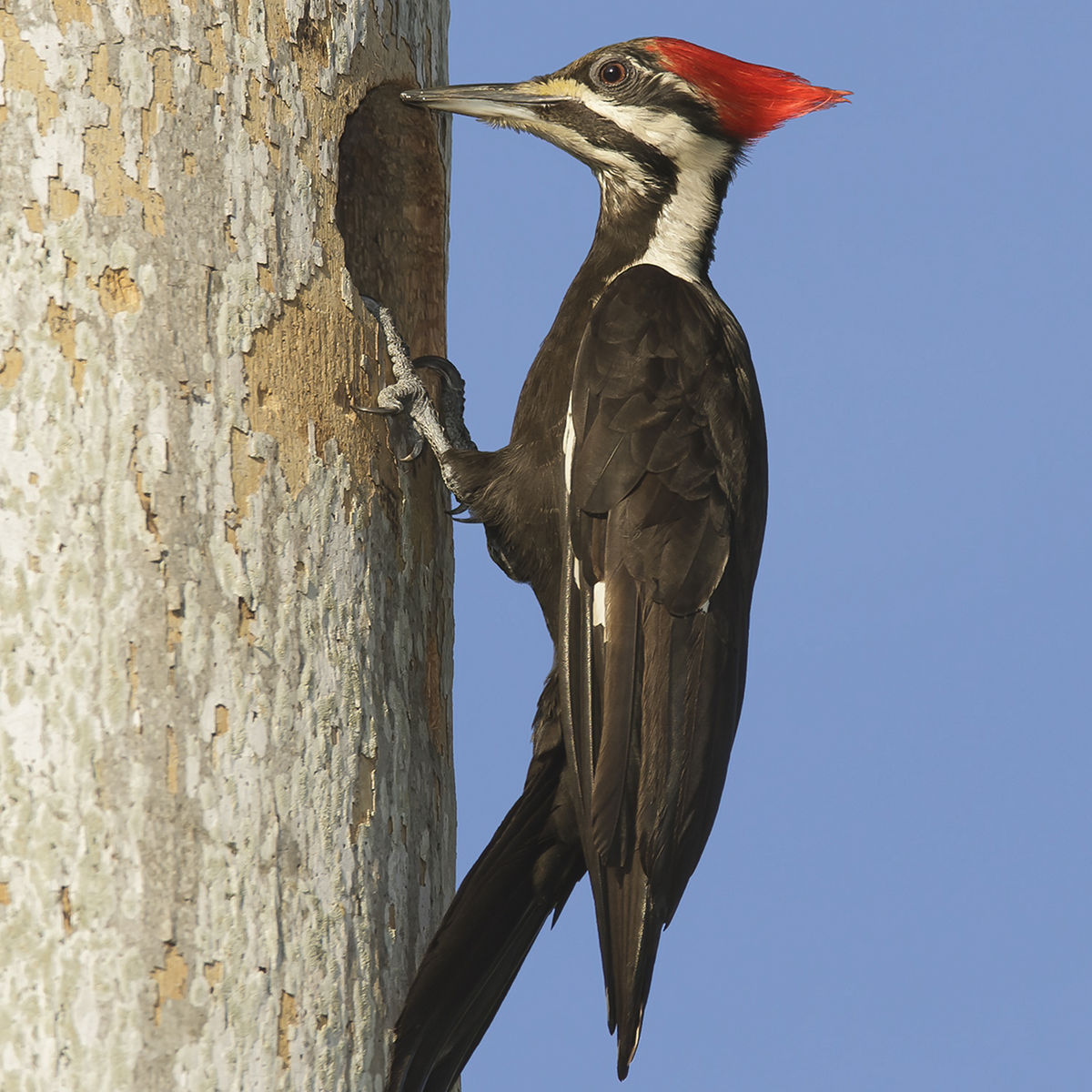Observing Woodpeckers in Florida: Types Diversity and Distribution
Woodpeckers: A Comprehensive Guide to Recognizing These Distinct Birds
Woodpeckers, with their distinctive habits and physical characteristics, have actually long astounded the inquisitiveness of ornithologists and nature lovers alike. From their rhythmic drumming echoing with the timbers to their exceptional adaptations for scaling tree trunks with simplicity, these birds present a remarkable study in avian biology. Nonetheless, what genuinely sets woodpeckers apart is not just their striking look however also their important duty in keeping the fragile equilibrium of environments. As we check out the elaborate makeup, varied varieties, and eco-friendly value of woodpeckers, a deeper recognition for these special birds and the enigmas they hold unravels.

Woodpeckers' Drumming Habits
Woodpeckers display a rhythmic and exact drumming actions that offers numerous important functions in their lives. This habits is mostly related to interaction, region protection, and foraging. The distinct drumming noise is produced by the rapid pecking of their beaks versus tough surfaces such as tree trunks, branches, and even steel items.
Communication is a vital element of woodpecker habits, and drumming plays a considerable function in this procedure. Woodpeckers use drumming to establish their visibility, attract friends, and keep contact with their partners and spawn. The frequency, strength, and duration of drumming sequences communicate particular messages to various other woodpeckers in the location.
In addition to interaction, woodpeckers make use of drumming habits for area defense. Woodpeckers in Florida. The loud and repeated drumming works as a cautioning to possible burglars, signaling that the location is already declared. By establishing their area with drumming, woodpeckers minimize the likelihood of conflicts over valuable resources such as food and nesting websites
Moreover, woodpeckers additionally utilize drumming as a foraging technique. The rhythmic pecking helps them situate bugs concealing under the bark of trees by creating resonances that interfere with the target's concealment. This habits showcases the flexibility and ingenuity of woodpeckers in utilizing their drumming abilities for multiple essential objectives.
One-of-a-kind Adaptations for Tree Climbing
Having actually grasped the art of drumming to connect, safeguard region, and forage, woodpeckers have actually developed special adjustments that facilitate their amazing climbing up capabilities in their arboreal habitats. Woodpeckers have zygodactyl feet, with two toes aiming ahead and 2 toes aiming backwards. These tail plumes provide stability and equilibrium, making it possible for woodpeckers to steer up tree trunks with precision and dexterity.
Additionally, woodpeckers have powerful neck muscles and an one-of-a-kind head structure that help in their climbing up capacities. Their solid neck muscles enable them to quickly peck at tree bark without experiencing whiplash, while their thick head and little mind function as shock absorbers, securing them from the effect of duplicated drumming. These adjustments collectively enable woodpeckers to browse the vertical world of trees with performance and poise.

Function of Woodpeckers in Ecosystems
By foraging for pests under the bark of trees, woodpeckers aid regulate pest populations, stopping outbreaks that can harm the overall health of the woodland. In addition, woodpeckers produce tooth cavities in trees that offer as crucial nesting websites for a selection of other bird types, advertising index biodiversity within the ecological community.
Additionally, the drumming and articulations of woodpeckers play an important function in interaction and area facility. These noises not only offer to draw in companions however also aid specify borders between different woodpecker regions, decreasing conflicts and promoting an unified conjunction within the forest area. In general, the existence of woodpeckers in woodland environments highlights their significance as keystone species, affecting the dynamics and functioning of these environments in diverse methods.
Makeup: Specialized Beaks and Feet
In the complex internet of woodland ecosystems, the specialized beaks and feet of woodpeckers are crucial adaptations that enable them to satisfy their important ecological duties. Woodpeckers have special anatomical attributes that are specifically developed to assist them in their foraging and nesting habits.
The most distinct feature of woodpeckers is their strong, chisel-shaped beaks. These beaks are perfectly adapted for boring into wood to informative post discover pests, larvae, and sap concealed beneath the bark of trees. The strong muscles and sturdy structure of their beaks enable woodpeckers to peck at a rate of approximately 20 times per secondly without triggering damage to their find this heads.
Additionally, woodpeckers have specialized feet that help in their acrobatic climbing capabilities. Their feet have two toes aiming ahead and 2 toes directing backward, giving a strong hold on upright surface areas (Woodpeckers in Florida). This special foot plan, together with stiff tail plumes that act as a helpful prop, permits woodpeckers to stick to tree trunks and branches with ease while they browse for food or dig deep into nesting cavities
Woodpecker Types Variety
What elements add to the remarkable diversity of woodpecker varieties throughout different habitats and regions? Woodpeckers are a diverse team of birds found throughout numerous communities worldwide, with over 200 known varieties showing adaptations to different settings. One vital factor driving this variety is the availability of ideal habitats. Woodpeckers have actually developed to inhabit a variety of atmospheres, from forests and timberlands to grasslands and deserts, each providing unique obstacles that have actually affected the evolution of distinctive woodpecker varieties.
These adaptations allow woodpeckers to forage effectively in their corresponding environments, decreasing competition among varieties and advertising niche distinction. Additionally, geographical seclusion and historical aspects have actually played a role in forming the circulation and variety of woodpecker varieties, leading to the broad variety of specialized adjustments seen in these interesting birds.

Conclusion
In conclusion, woodpeckers are interesting birds that display special drumming actions, specialized adaptations for tree climbing, and play crucial roles in communities. Their anatomy, including specialized beaks and feet, enables them to flourish in their setting. With a varied range of woodpecker varieties located worldwide, these birds are important for keeping the health and equilibrium of forests and forests. Understanding and valuing the details of woodpeckers can supply important understandings into the environment.